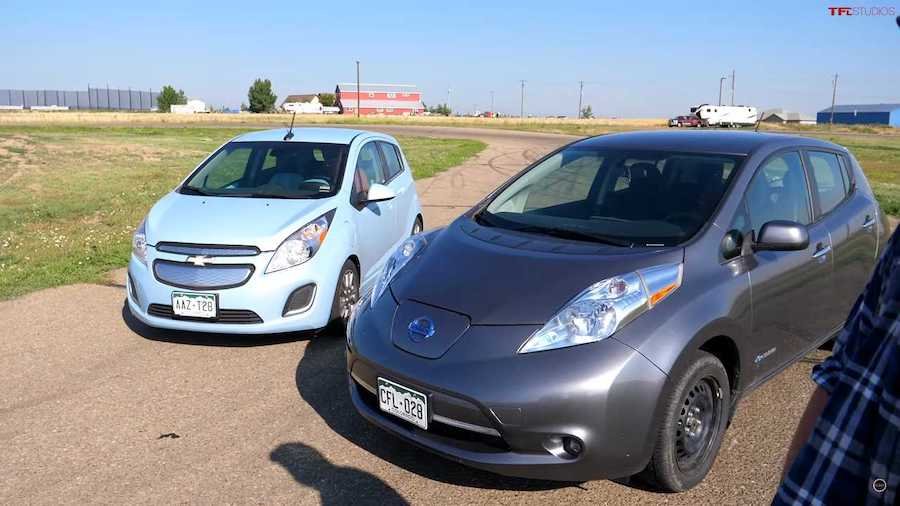Chevy Spark And Nissan Leaf Have The Slowest, Quietest Drag Race Ever

Let's face the facts. Life can't always be filled with excitement and yes, that even translates to the world of drag racing. Some say electric cars are soulless and boring, and while we strongly disagree with that assessment given the capabilities of machines like the Porsche Taycan or Rimac Nevera, we suspect most EV naysayers envision vehicles like the two featured here in their criticisms of an electric future.
What are these two vehicles? First up is a 2016 Nissan Leaf, a perfectly fine machine as vehicles go though admittedly, not designed to set the streets ablaze. In 2016, this small electric car churned out 107 horsepower (80 kilowatts) and if you were careful in using that power, you'd get around 100 miles on a single charge.
The other car is a 2017 Chevrolet Spark EV, which is also most uninteresting save for one critical factor. When new, its electric powertrain generated 140 hp (105 kW) but a back-slapping 400 pound-feet (542 Newton-meters) of torque. It may look goofy, but the Spark has guts.
Why are these two older EVs drag racing in 2021? TFLcar brought them together for the fun of it and hey, who said fun always has to be exciting? With a track at their disposal, the humble cars enjoy a quiet afternoon of entry-level EV action. A side-by-side drag race down the main straight is followed by individual timed laps around the whole track. Just as internal combustion engines drink mass quantities of fuel when pushed hard, electric motors drain battery power like nobody's business. After just one lap, both cars killed several miles worth of range. So see? There is some common ground between electric and internal combustion power.
We'll let the video reveal which car is faster, but we will say this. A Porsche Taycan 4S shows up towards the end to remind us that an electrified future in the automotive realm absolutely won't be slow.
